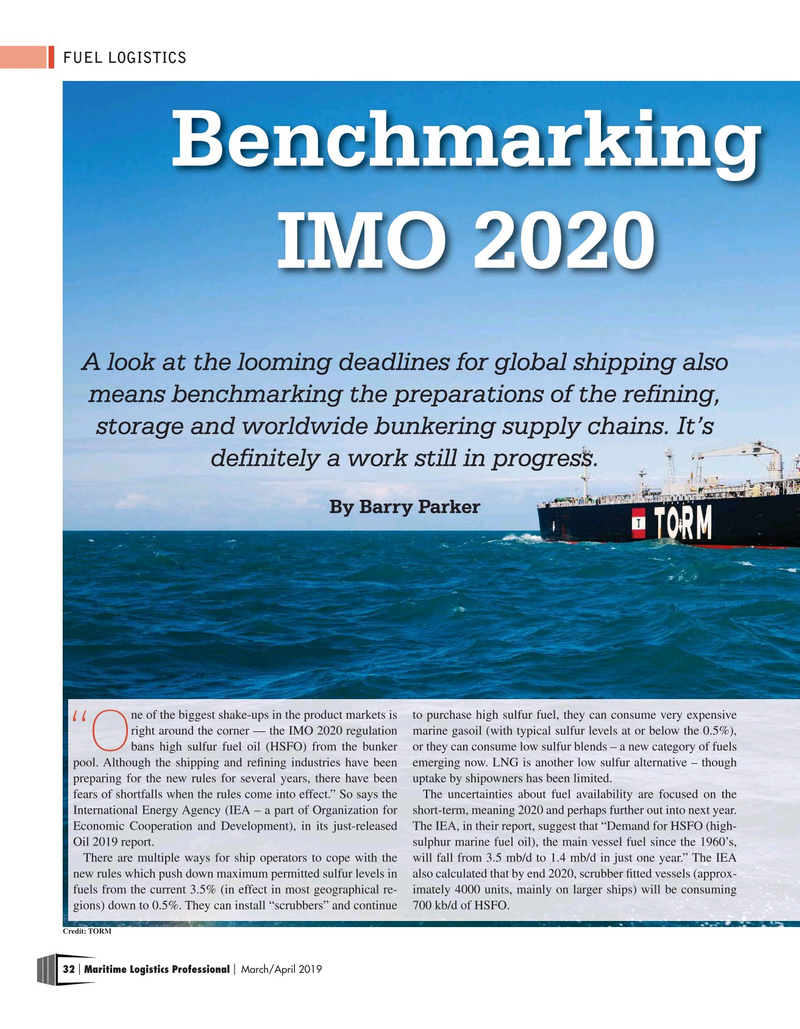
Page 32: of Maritime Logistics Professional Magazine (Mar/Apr 2019)
Container Ports
Read this page in Pdf, Flash or Html5 edition of Mar/Apr 2019 Maritime Logistics Professional Magazine
FUEL LOGISTICS
Benchmarking
IMO 2020
A look at the looming deadlines for global shipping also means benchmarking the preparations of the refining, storage and worldwide bunkering supply chains. It’s definitely a work still in progress.
By Barry Parker ne of the biggest shake-ups in the product markets is to purchase high sulfur fuel, they can consume very expensive right around the corner — the IMO 2020 regulation marine gasoil (with typical sulfur levels at or below the 0.5%), “O bans high sulfur fuel oil (HSFO) from the bunker or they can consume low sulfur blends – a new category of fuels pool. Although the shipping and re?ning industries have been emerging now. LNG is another low sulfur alternative – though preparing for the new rules for several years, there have been uptake by shipowners has been limited. fears of shortfalls when the rules come into effect.” So says the The uncertainties about fuel availability are focused on the
International Energy Agency (IEA – a part of Organization for short-term, meaning 2020 and perhaps further out into next year.
Economic Cooperation and Development), in its just-released The IEA, in their report, suggest that “Demand for HSFO (high-
Oil 2019 report. sulphur marine fuel oil), the main vessel fuel since the 1960’s,
There are multiple ways for ship operators to cope with the will fall from 3.5 mb/d to 1.4 mb/d in just one year.” The IEA new rules which push down maximum permitted sulfur levels in also calculated that by end 2020, scrubber ?tted vessels (approx- fuels from the current 3.5% (in effect in most geographical re- imately 4000 units, mainly on larger ships) will be consuming gions) down to 0.5%. They can install “scrubbers” and continue 700 kb/d of HSFO.
Credit: TORM 32 Maritime Logistics Professional March/April 2019 | |

 31
31

 33
33
